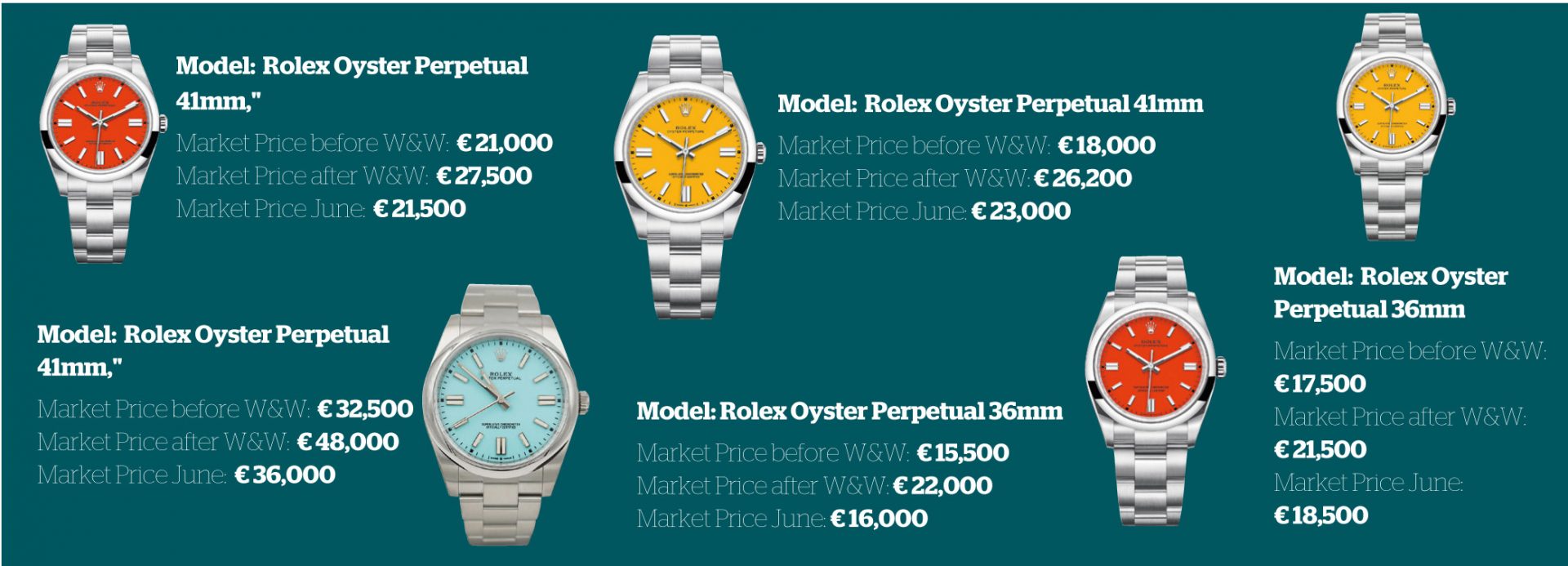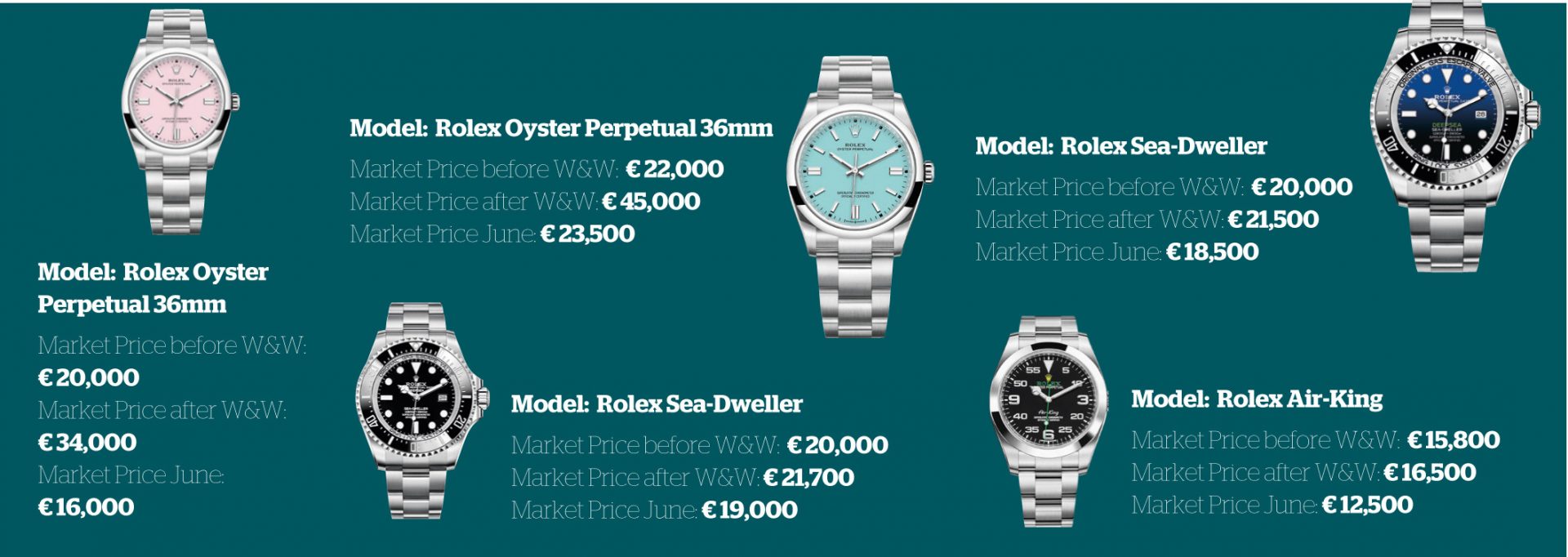Panic selling — or perhaps just profit-taking — of the most over-heated and over-priced watches on the secondary market is barely making a dent in demand at the primary retailer level, according to major authorised dealers in Britain and the United States.
A report using data from CHRONEXT, which showed prices for discontinued watches from Rolex spiking at the end of the first quarter and then falling by up to 50% became the most read story of all time on WATCHPRO earlier this month, and led to speculation that the wider market could be cooling.
There is no doubt that the trading frenzy peaked at the end of March, around the time of Watches and Wonders in Geneva, with dealers driving prices ever higher by selling to each other pieces like the Rolex Oyster Perpetual in several colours, which rocketed in value in Q1 before falling back sharply.

It is worth noting that this part of the entire watch ecosystem is like the chocolate sprinkles on top of the froth on top of the cappuccino.
Watches in this ‘sprinkles’ segment include the likes of the much hyped Rolex Oyster Perpetuals in a range of colours, and which were discontinued at the end of Q1. It also includes steel Daytonas, Nautiluses, Aquanauts and Royal Oaks, which have seen more modest price drops of around 25% since the peak in March.
The froth — slightly more substantial but just as vulnerable to deflation — includes high volume watches like Rolex’s GMTs and Submariners (in fact almost all of the Rolex catalogue right now) and a handful of references from the likes of Omega, IWC and Zenith.
These watches are still selling at over retail prices because there are waiting lists, but they are in a more manageable part of the market.
Waits are not too long in most cases (OK, the Pepsi GMT is still nuts), but they are attainable and therefore people are less willing to pay 3x, 4x even 10x retail to acquire them fast.
Then there is the morass of watches, and we are talking about the overwhelming majority of references, that can still be bought at a discount on the secondary market. Thankfully, the discounting is much less dramatic than a few years ago because brands are more accurately matching supply to demand, but punters can still expect to get 10-20% off most watches from most watchmakers.
So, is the cooling at the top end infecting the primary market?
Not at all, according to Brian Duffy, CEO of Watches of Switzerland Group.
“There are now many more products on waiting lists, and waiting times for customers are longer,” he said in an article by WATCHPRO columnist Robin Swithinbank for the New York Times.
In the same article, Mr Duffy suggests that the froth coming off the market could be a positive development for such a luxury business as Swiss mechanical watches.
“A tempering of demand would be a good thing,” he says. “But I don’t think the dynamics of the disparity in supply and demand will change, even in the event of an economic downturn. The industry is very well positioned and its product lasts forever,” he concludes.
Mark Udell, owner of London Jewelers, which has several luxury watch and jewelery boutiques throughout New York and New Jersey, agrees. “The demand for some product is so much greater than supply that even if it drops a touch, it will still be way over what we can deliver,” he said. “The harder it is to get something, the more people want it.”


